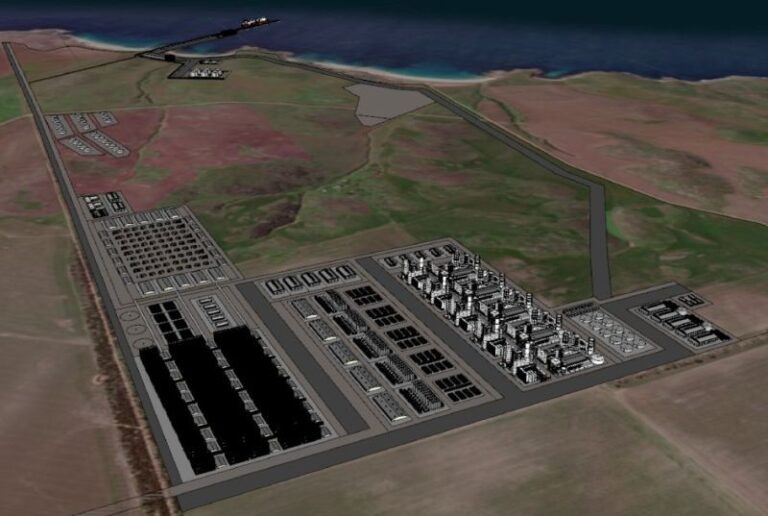Amp Energy is “full speed ahead” on the development of a green hydrogen production facility with up to 10 GW of electrolysis capacity in South Australia, after completing commercial agreements for the multi-million dollar project.
Amp Energy and Australian miner Iron Road said they have completed binding transaction documents paving the way for the development of a green hydrogen and ammonia production facility on South Australia’s Eyre Peninsula.
The Cape Hardy Advanced Fuels Projectwhich will deliver production at scale with up to 10 GW of planned electrolyzer capacity, is being developed within Iron Road’s Cape Hardy Industrial Port Precinct near Tumby Bay.
Canada-based Amp Energy said the commercial agreements include the purchase of a 630-hectare parcel within the industrial estate, as well as a definitive royalty structure and infrastructure agreements for common users.
The Cape Hardy Advanced Fuels Precinct is planned to start with an initial phase of 1 GW of electrolysis capacity, followed by escalating phases to reach a total capacity of 10 GW. Once fully operational, ammonia production based on renewable energy sources is expected to approach 10 million tons per year.
AMP President Paul Ezekiel said that in addition to green hydrogen and ammonia, the project will also enable large-scale production of advanced fuels, including methanol, and sustainable aviation fuel.
“We are seeing growing demand for advanced fuels both in Australia and overseas… fuels that will be critical to the energy transition and achieving net zero targets,” he said, adding that development was now “at full throttle.” moving forward.”
The Cape Hardy Advanced Fuels facility will target both domestic and export markets. To facilitate distribution, the project will feature Iron Road, Australia’s first purpose-built advanced fuels export terminal, which owns a long-lived iron ore mine at Cape Hardy and is developing a deep-sea port facility on site.
Amp Energy said it has already made significant development progress on the project and aims to complete the pre-front end engineering design (FEED) studies for the first 1 GW electrolysis phase within the next nine months.
The company said FEED scoping and contracting is currently underway, ahead of the FEED contract award in late 2024 or early 2025.
Water for the project will come from Northern Water Supply’s (NWS) recently announced seawater desalination plant, which will be located in Cape Hardy.
The Australian Federal Government earlier this week committed AUD65 million ($43.3 million) to work with the South Australian government and industry to jointly fund a AUD230 million work package for the NWS project, which will see construction of a seawater desalination plant at Cape. Hardy and approximately 600 kilometers of pipeline to the far north of South Australia.
Initial analysis shows that the project has the potential to generate more than AUD 5 billion in economic benefits per year and create 4,000 ongoing jobs in the resources and renewable energy sectors.
Amp Energy said it expects the 1GW first phase of the Cape Hardy Future Fuels project to create 4,000 direct and 6,000 indirect jobs.
This content is copyrighted and may not be reused. If you would like to collaborate with us and reuse some of our content, please contact: editors@pv-magazine.com.


